JONES, John Paul (1747-1782). Autograph letter signed (“Jno Paul Jones”) to Dudley Saltonstall, commanding the ship Alfred , Philadelphia, “Sunday afternoon 4 O’Clock” [late November 1775 - February 1776]. One page, 4to. Addressed in Jones’ hand on the integral address leaf on verso, folds, small seal tear, moderate dampstains, foxing and toning.
JONES, John Paul (1747-1782). Autograph letter signed (“Jno Paul Jones”) to Dudley Saltonstall, commanding the ship Alfred , Philadelphia, “Sunday afternoon 4 O’Clock” [late November 1775 - February 1776]. One page, 4to. Addressed in Jones’ hand on the integral address leaf on verso, folds, small seal tear, moderate dampstains, foxing and toning. The earliest known Revolutionary War date letter written by John Paul Jones extant. Writing as a lieutenant in the recently-established Continental Navy, Jones discusses recruiting sailors for the Alfred , the first warship to fly an American flag. That ship would form a squadron that would launch the first amphibious assault by American marines in March 1776. Confined to his quarters with a cold, he apologizes to Saltonstall, explaining that “on paying the month’s advance the places of the several … Residence hath not been inserted with their Names -- but hath been entirely omitted -- and as I am entirely Ignorant of their abodes -- it hath consequently been out of my power to send down equal Quantities of Men with some other Gentlemen who are in Town -- this being promised it is needless to Add that I shal[l] in all probability Continue equally Unsuccessful ‘till some expedient is fall’n upon to remove that difficulty. -- Perhaps if some of the Officers who are acquainted in the Town were sent up it might have good Effect[.] What ever you please to point out to me I will use my utmost endeavours to perform -- I am at this moment under a Chilly Fit -- rather a severe one-- which must appologize for this Bloated scrawl…” In a short postscript, Jones adds that Captain Abraham Whipple (1733-1819) was unable to leave his room, observing that he too was suffering from a “severe Cold.” An unusually early letter from Jones, written soon after he joined the Continental Navy in November 1775. Commissioned as a lieutenant, the fledgling navy assigned Jones to assist in outfitting the ship Alfred , a recently-captured British merchantman formerly known as The Black Prince. In early December 1775, Jones, acting in the absence of Captain Saltonstall, enjoyed the distinct honor of raising the Continental standard over the Alfred --the first time an American flag was ever flown from a Navy vessel. An experienced sailor who had served on British merchantmen for many years, Jones took charge of recruiting and paying sailors to fill out the crew of the Alfred. Due to the ad hoc nature of procedures in the newly-established Continental Navy, Jones ran into administrative complications as he attempted to recruit and pay seamen. In his memoir, Jones remarked that Congress had resolved to send the small fleet of Continental vessels to Virginia to operate against Lord Dunmore. However, according to Jones, Esek Hopkins, “displayed neither zeal nor intelligence on this occasion; he lost so much time that his squadron found itself imprisoned by ice in the Delaware.” (Gawalt et al, John Paul Jones’ Memoir of the American Revolution…, p. 5) In mid-February the ice broke, and the squadron, which included the Alfred with Jones aboard , and Whipple in command of the USS Columbus , sailed to New Providence in the Bahamas, where they mounted the first amphibious assault by American forces on 3-4 March 1776. 250 marines and sailors came ashore and forced the surrender of Fort Nassau, seizing a valuable cache of over 80 cannons and mortars. The small fleet returned to Philadelphia with the island’s governor in shackles. Jones would soon advance in the ranks and assumed command of his first ship, the Providence , in May 1776 before going on to greater glory aboard the Bonhomme Richard three years later. A fine, early letter from Jones. According to American Book Prices Current , this is the earliest Revolutionary War date letter from Jones ever to appear at auction.
JONES, John Paul (1747-1782). Autograph letter signed (“Jno Paul Jones”) to Dudley Saltonstall, commanding the ship Alfred , Philadelphia, “Sunday afternoon 4 O’Clock” [late November 1775 - February 1776]. One page, 4to. Addressed in Jones’ hand on the integral address leaf on verso, folds, small seal tear, moderate dampstains, foxing and toning.
JONES, John Paul (1747-1782). Autograph letter signed (“Jno Paul Jones”) to Dudley Saltonstall, commanding the ship Alfred , Philadelphia, “Sunday afternoon 4 O’Clock” [late November 1775 - February 1776]. One page, 4to. Addressed in Jones’ hand on the integral address leaf on verso, folds, small seal tear, moderate dampstains, foxing and toning. The earliest known Revolutionary War date letter written by John Paul Jones extant. Writing as a lieutenant in the recently-established Continental Navy, Jones discusses recruiting sailors for the Alfred , the first warship to fly an American flag. That ship would form a squadron that would launch the first amphibious assault by American marines in March 1776. Confined to his quarters with a cold, he apologizes to Saltonstall, explaining that “on paying the month’s advance the places of the several … Residence hath not been inserted with their Names -- but hath been entirely omitted -- and as I am entirely Ignorant of their abodes -- it hath consequently been out of my power to send down equal Quantities of Men with some other Gentlemen who are in Town -- this being promised it is needless to Add that I shal[l] in all probability Continue equally Unsuccessful ‘till some expedient is fall’n upon to remove that difficulty. -- Perhaps if some of the Officers who are acquainted in the Town were sent up it might have good Effect[.] What ever you please to point out to me I will use my utmost endeavours to perform -- I am at this moment under a Chilly Fit -- rather a severe one-- which must appologize for this Bloated scrawl…” In a short postscript, Jones adds that Captain Abraham Whipple (1733-1819) was unable to leave his room, observing that he too was suffering from a “severe Cold.” An unusually early letter from Jones, written soon after he joined the Continental Navy in November 1775. Commissioned as a lieutenant, the fledgling navy assigned Jones to assist in outfitting the ship Alfred , a recently-captured British merchantman formerly known as The Black Prince. In early December 1775, Jones, acting in the absence of Captain Saltonstall, enjoyed the distinct honor of raising the Continental standard over the Alfred --the first time an American flag was ever flown from a Navy vessel. An experienced sailor who had served on British merchantmen for many years, Jones took charge of recruiting and paying sailors to fill out the crew of the Alfred. Due to the ad hoc nature of procedures in the newly-established Continental Navy, Jones ran into administrative complications as he attempted to recruit and pay seamen. In his memoir, Jones remarked that Congress had resolved to send the small fleet of Continental vessels to Virginia to operate against Lord Dunmore. However, according to Jones, Esek Hopkins, “displayed neither zeal nor intelligence on this occasion; he lost so much time that his squadron found itself imprisoned by ice in the Delaware.” (Gawalt et al, John Paul Jones’ Memoir of the American Revolution…, p. 5) In mid-February the ice broke, and the squadron, which included the Alfred with Jones aboard , and Whipple in command of the USS Columbus , sailed to New Providence in the Bahamas, where they mounted the first amphibious assault by American forces on 3-4 March 1776. 250 marines and sailors came ashore and forced the surrender of Fort Nassau, seizing a valuable cache of over 80 cannons and mortars. The small fleet returned to Philadelphia with the island’s governor in shackles. Jones would soon advance in the ranks and assumed command of his first ship, the Providence , in May 1776 before going on to greater glory aboard the Bonhomme Richard three years later. A fine, early letter from Jones. According to American Book Prices Current , this is the earliest Revolutionary War date letter from Jones ever to appear at auction.
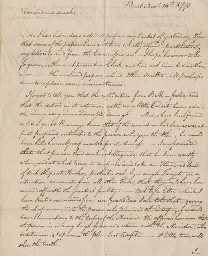

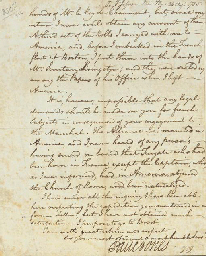
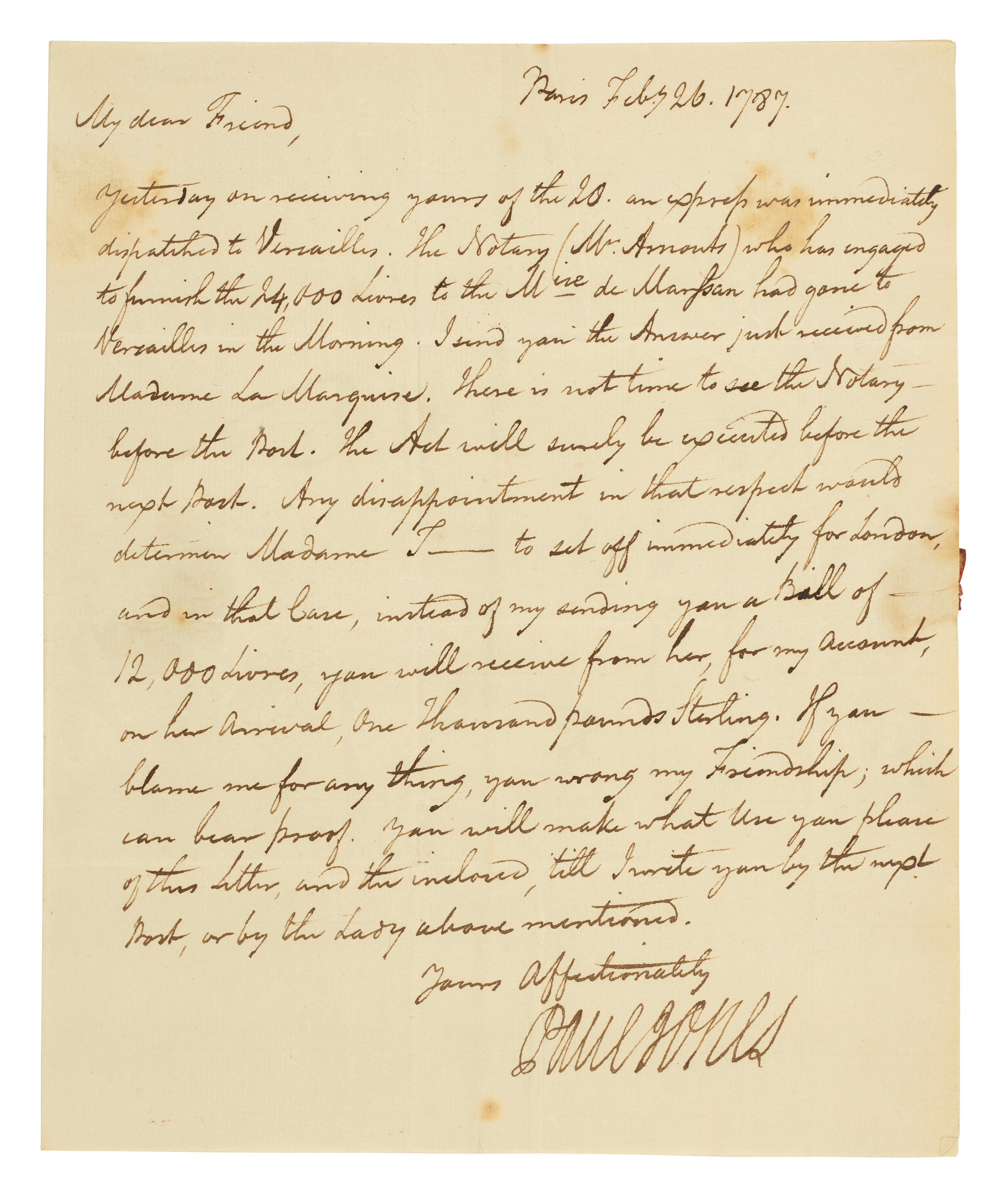


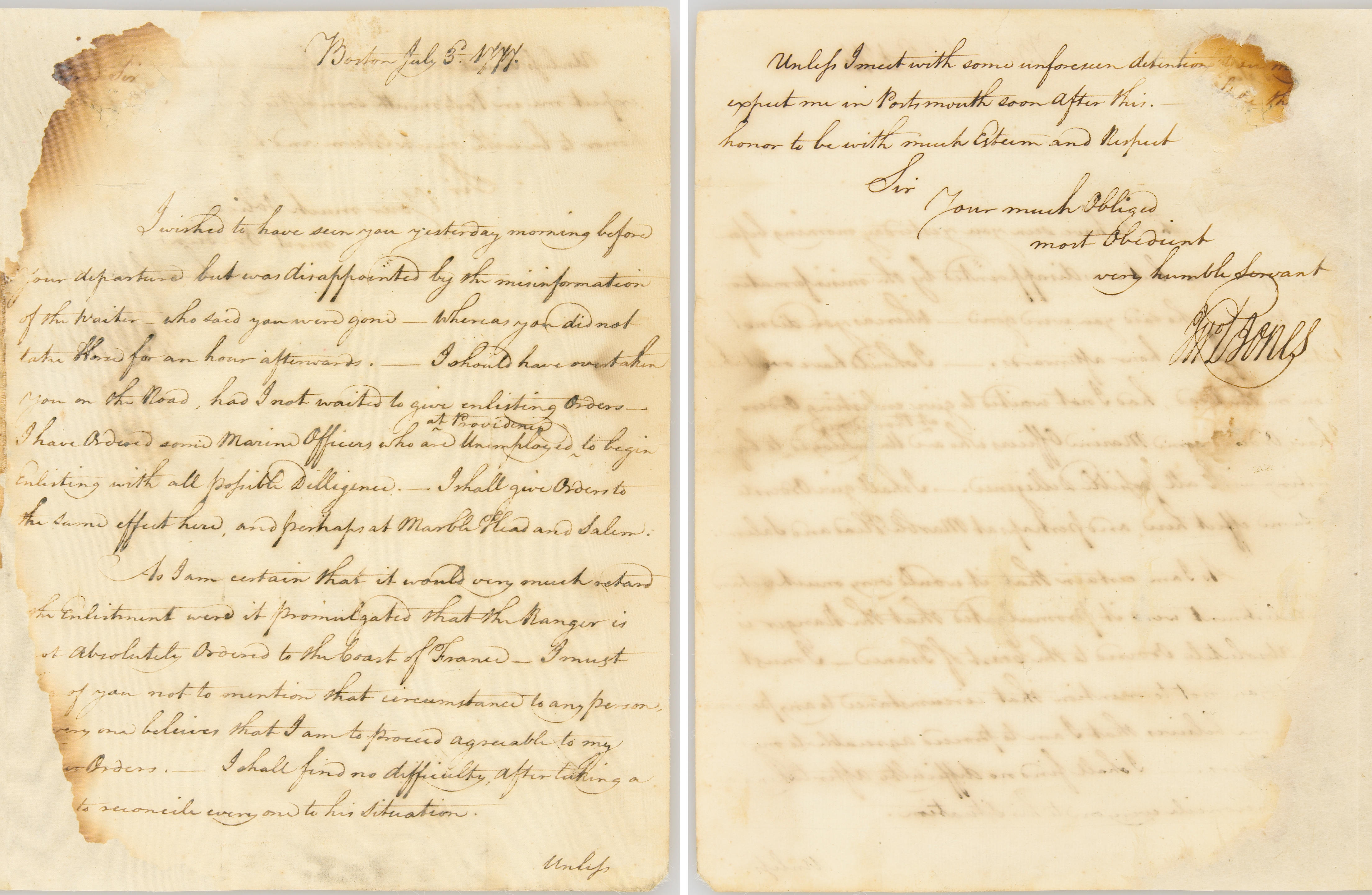
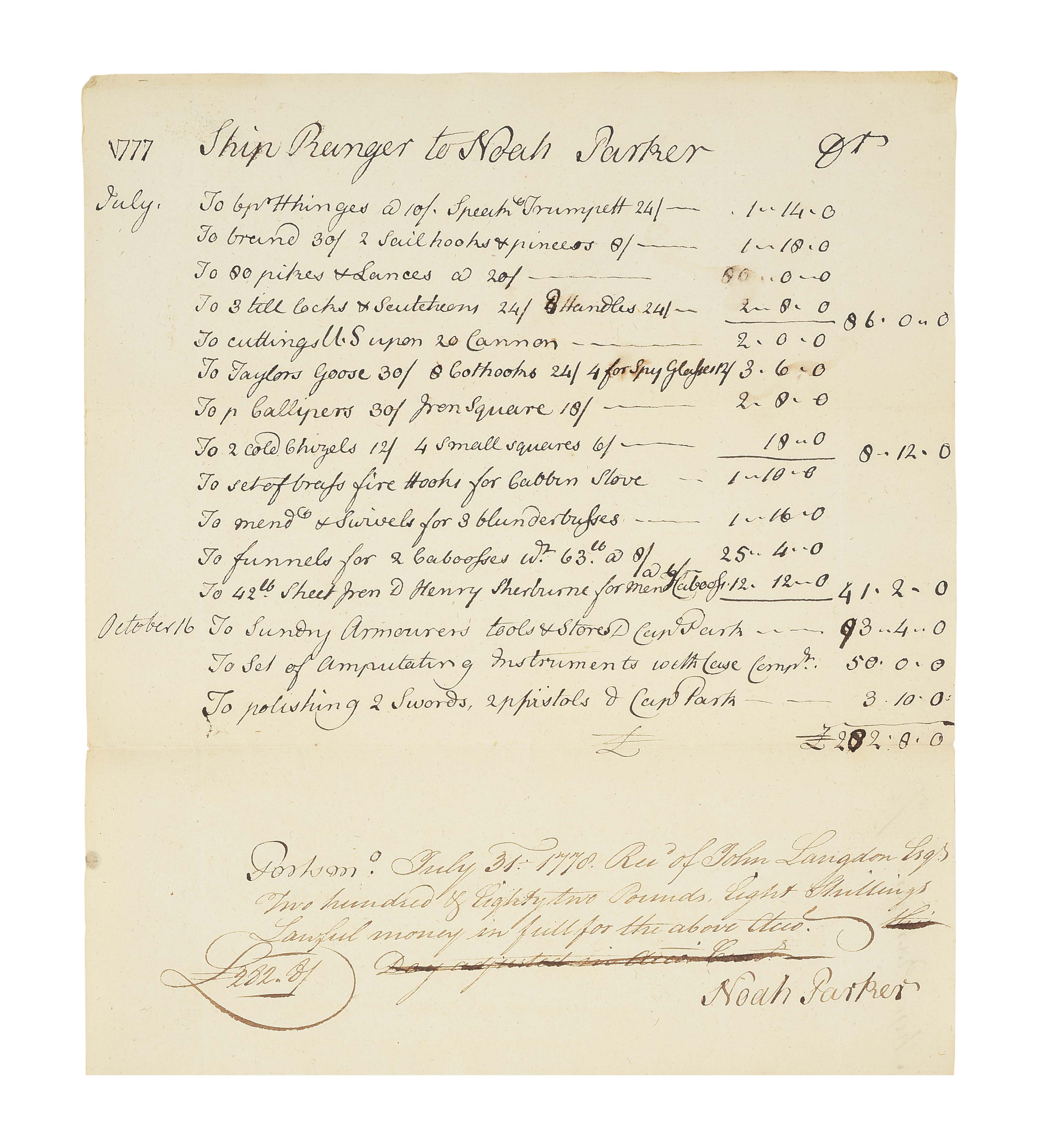
.jpg)
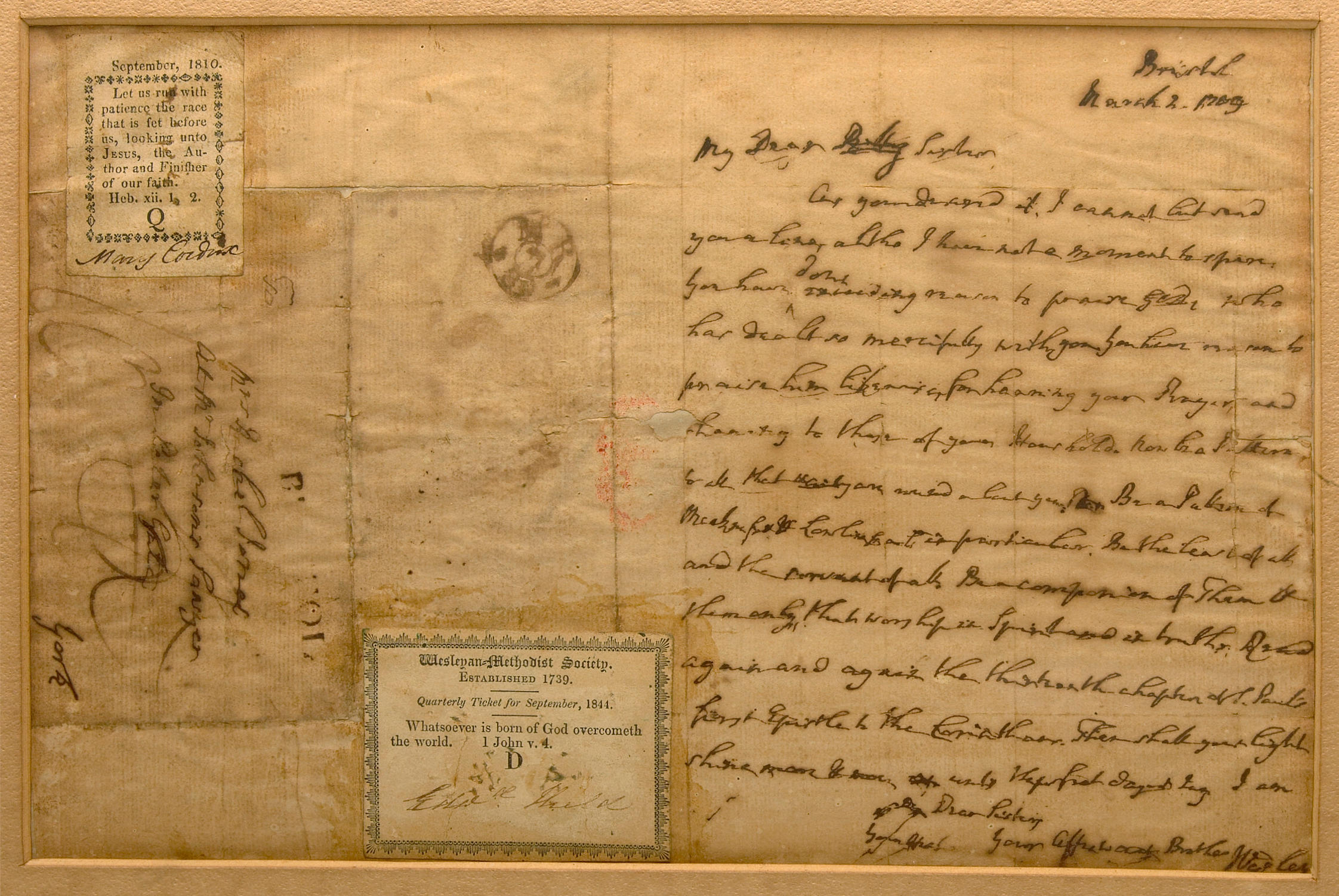

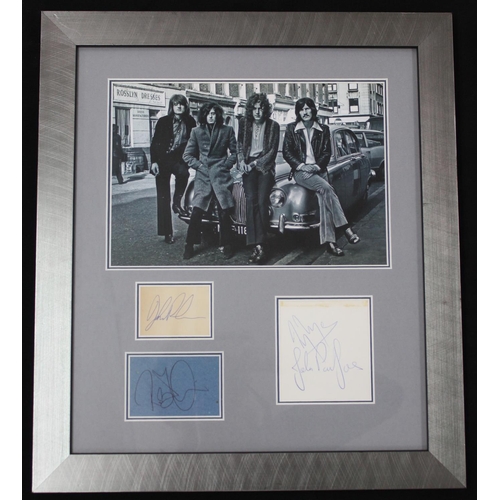
Try LotSearch and its premium features for 7 days - without any costs!
Be notified automatically about new items in upcoming auctions.
Create an alert